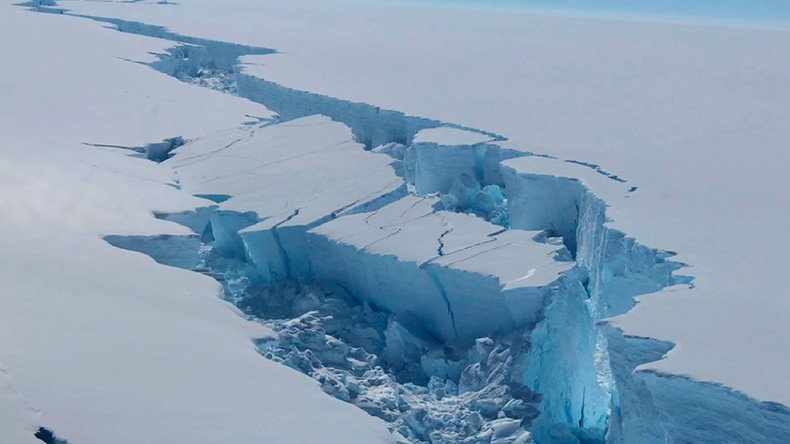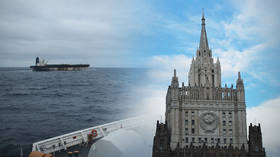Larsen B part 2? Monster iceberg drifts further from Antarctic shelf (SATELLITE IMAGES)

A mega iceberg four times larger than London continues to drift further out into the Antarctic Weddell Sea, with fears its movement could lead to the demise of another major ice shelf.
Satellite images taken from space reveal iceberg A68, which calved away from the Larsen C ice shelf in July, has markedly shifted its position.
READ MORE: Astounding satellite images show mega iceberg from Larsen C breaking up
The breakaway made A68 the biggest iceberg on record, weighing an astonishing one trillion tonnes.
Highlighting the massive iceberg’s “drifting,” climate professor Stef Lhermitte posted photos to Twitter from European Space Agency’s Sentinel 1 satellite and NASA.
The slow drifting of #LarsenC 's #A68 iceberg from @NASAEarth 's #MODIS and #VIIRS. Check the polynya (open sea) when the drift starts. pic.twitter.com/DBtNH9o3Ys
— Stef Lhermitte (@StefLhermitte) September 15, 2017
“After some initial back-and-forth movement, Larsen C’s iceberg A68 seems on drift now,” Lhermitte said.
The Delft University professor followed up the post with a satellite composite of the iceberg’s increasing distance from the shelf from which it splintered.
#LarsenC 's iceberg #A68 continues to drift in the today's 16/9 vs. 13/9 @ESA_EO#sentinel1 composites pic.twitter.com/e8ncIv59v9
— Stef Lhermitte (@StefLhermitte) September 16, 2017
It’s not thought that the iceberg carries any immediate threat to people, since it is situated in an uninhabited region.
However, there are concerns that the iceberg’s movement could destabilize the nearby Larsen C, provoking its dramatic destruction - a fate previously experienced on the Antarctic Peninsula with the collapse of Larsen B in 2002.
READ MORE: New satellite images show Antarctica’s 1 trillion ton iceberg in stunning detail (PHOTOS)
Back then, the 3,250 square kilometer Larsen B shelf collapsed almost entirely in just over a month.
Prior to A68’s fracture, Project Midas, a group monitoring iceberg movement in the area, admitted there was uncertainty over the future of the 600-meter-thick Larsen C ice peninsula.
“In the ensuing months and years, the ice shelf could either gradually regrow, or may suffer further calving events which may eventually lead to collapse - opinions in the scientific community are divided. Our models say it will be less stable, but any future collapse remains years or decades away,” said professor Adrian Luckman.












